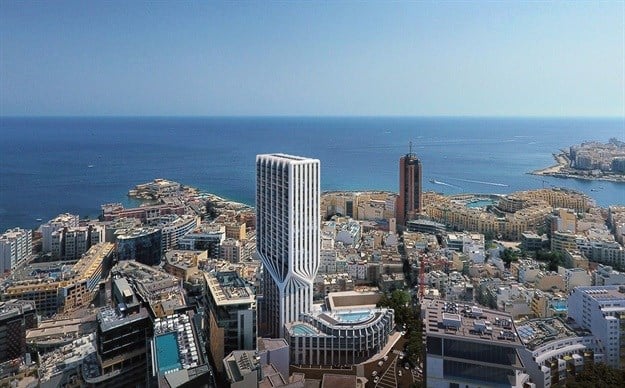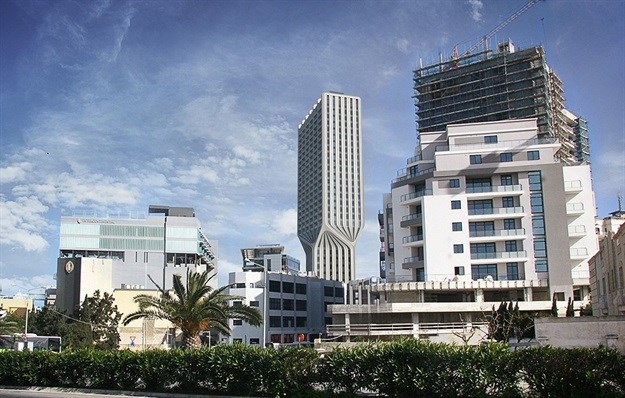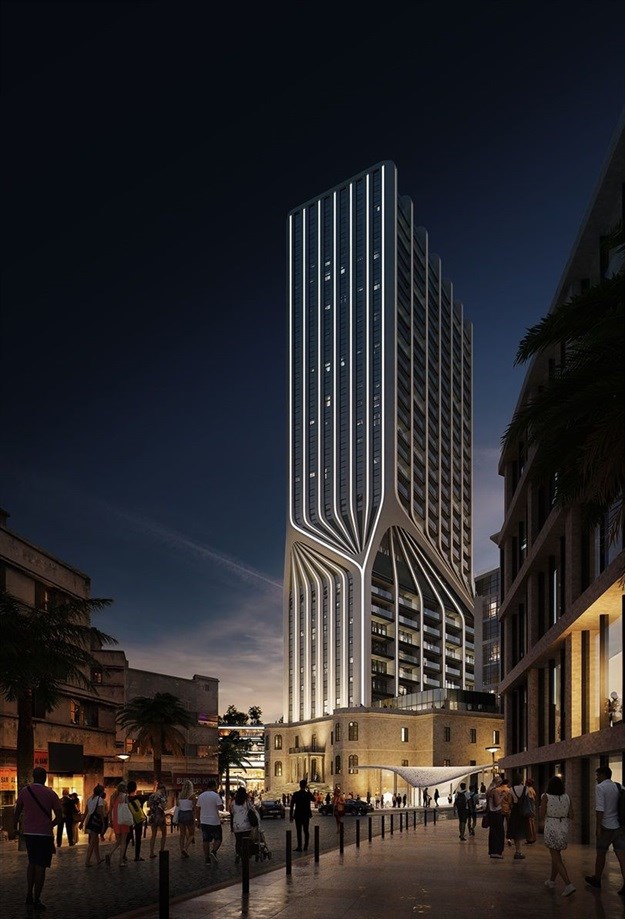Zaha Hadid Architects to renovate Malta's historic Mercury House

ZHA's major overhaul for the 9,405m2 site will integrate residential apartments and a boutique hotel within Malta’s most dynamic urban environment by creating new public spaces and amenities for the island’s residents and visitors. The design scheme responds to Paceville’s key urban challenges by investing in its civic realm and increasing its limited housing supply.
Dubbed Mercury Tower, the 31-storey tower is located on Malta's east coast. The site has developed over the past 50 years as the island’s tourist and entertainment centre, accommodating new projects that address this continued growth.

Major tourist hub
Paceville was established as a cluster of holiday homes in the early 20th century and developed into a major tourist hub from the 1960s, which sits at the heart of St Julian’s in Malta where many of the island’s restaurants, bars, nightclubs, casinos and marina are located, together with international hotels including the Hilton, Le Meridien, InterContinental and Westin.
ZHA's Mercury Tower is situated in a derelict site, which includes the remaining façades of the old Mercury House that date from 1903. Two underground vaults created during the Cold War are also within the site’s boundary.
ZHA takes cues from the site's historic traces and transforms them into the tower as a reinterpretation with fluid lines and changing geometry downwards. On this project, the architects will work with Malta’s leading conservation architect Annamaria Attard Montalto. These heritage structures will be renovated as integral parts of the new development.

Reinstating historic interiors
The studio will restore the old Mercury House façades and reinstate its remaining historic interiors as gathering spaces and entrance for the apartments and hotel.
"Restoring the facades of the old Mercury House to their original height enables this heritage structure to be read as a whole. The new development lands behind these renovated façades, defining the original Mercury House as the focus of a new public piazza," said Zaha Hadid Architects.
"Including water features and fountains for children to play, as well as seating areas to relax, the new piazza will be the centre of its community by day, and one of Malta’s primary gathering places by night to suit the island’s al fresco lifestyle."

Incorporating civic amenities
With the refurbished Mercury House at its base, the 24,500m2 renovation and redevelopment incorporates civic amenities including cafes and shops surrounding the large piazza together with a new café pavilion of soft curves and a transparency that accentuates the solidity of the old Mercury House.
The 31-storey tower of residential apartments and hotel is aligned at street level to integrate with Paceville’s existing urban fabric and to reduce its footprint, maximising civic space within the new piazza.
ZHA designed the tower as two volumes stacked vertically - the tower incorporates a realignment that expresses the different functional programmes within.
The lower nine-storey volume will house apartments, while the higher 19-storey volume is rotated to orientate guest rooms of the new hotel towards the Mediterranean, providing optimal views of Malta’s renowned azure sea.
"Re-aligning the tower’s higher floors reduces solar gain and instils a sense of dynamism within its silhouette that changes when viewed from different directions around Paceville," added the firm. The transitioning floors (levels 10, 11 and 12) accommodate the tower’s realignment and house the dramatic public spaces of the hotel’s reception lobby, as well as an outdoor pool with views to the sea.

Insulated façade with limited glazing
The Mercury Tower will be covered by insulated façade, combined with limited glazing in areas of significant direct sunlight, designed to provide shading and increase the tower’s overall thermal performance. The tower's design also follows local pedestrian comfort and wind climate conditions.
"Marrying a variety of public, residential and commercial functions together with the creation of a vibrant new civic space, the redevelopment of Mercury House includes the renovation of derelict heritage structures and responds to the demands of the island’s future socio-economic development," added the firm in a press release.
"Malta’s location at the midpoint of the Mediterranean has made the island a centre of trade and tourism. Welcoming almost 2.5-million international tourists last year with the number of visitors growing by almost 10% annually. Malta’s hospitality industry employs 30% of the country’s workforce and is anticipated to grow to 40% of the island’s employment over the coming decade."
Article originally published on World Architecture Community.